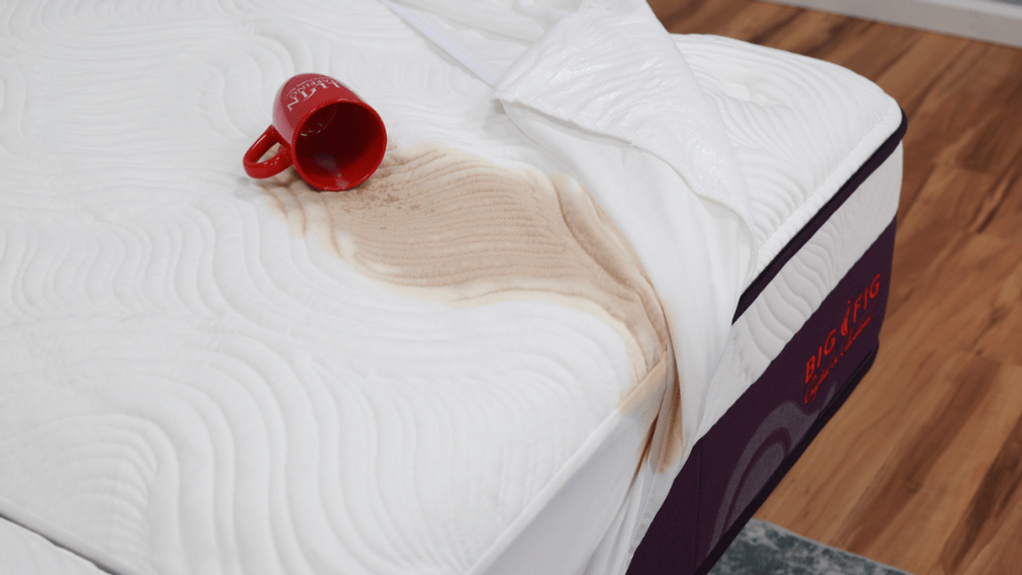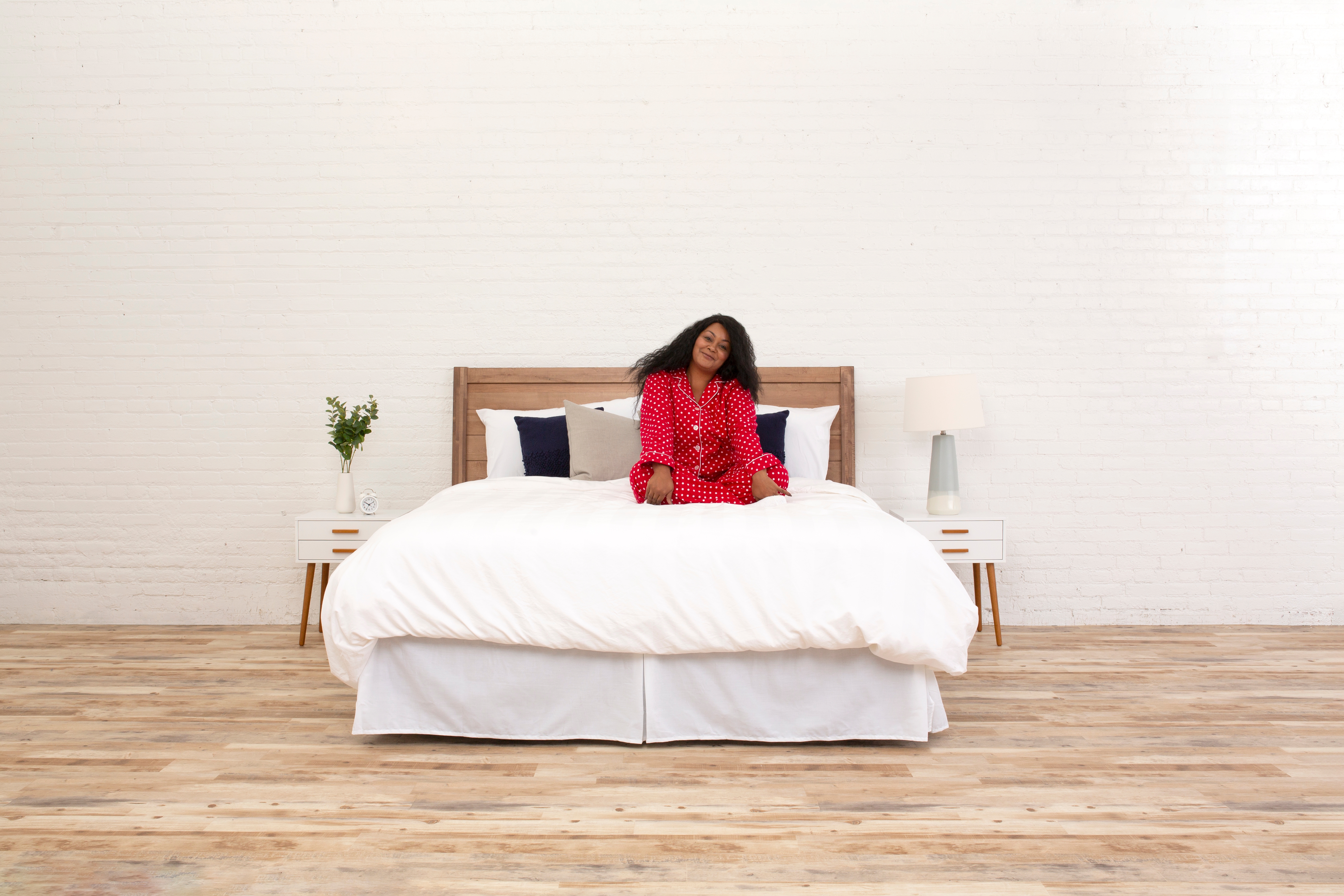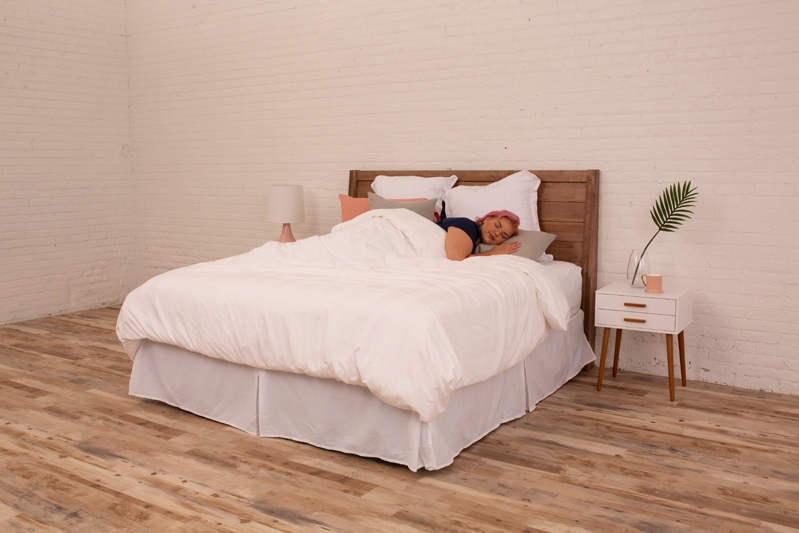If you’re in possession of a quality mattress protector… you don’t need this blog. If you’re reading this and you don’t have a mattress protector, get one and save yourself a lot of work… However, since we’re already here and you are in need, we can help!
You probably spend seven to nine hours on your mattress every night. During that time, dead skin cells, dust, sweat, and oil from your body can make their way onto it. That’s why it’s recommended to clean your (unprotected) mattress every couple of months.
How To Keep Your Mattress ‘So Fresh And So Clean’
Here’s an undeniably shocking stat:
You could expect to find over ten million dust mites in the average bed (they love warm, moist environments). They are pretty harmless, but their body fragments and droppings can cause colds -- and we haven’t even touched on dead skin and sweat, another couple of perfectly natural hazards. Gross.
However, you can do something about this. One of the best tips we can probably provide you for having a clean mattress is to simply pick up a mattress protector, or get into a regular mattress-cleaning routine.
Here Are A Few Habits To Embrace For a Cleaner Mattress
Habit #1: Invest in a high-quality mattress protector (maybe, like, the one offered here at Big Fig?). Ultimately, the more you can prevent stains and odors from reaching your mattress in the first place, the better.
Habit #2: Rotate your mattress once a month to ensure even wear and tear.
Habit #3: Swap out your bed sheets at least once every two weeks. You don’t want to put dirty sheets back on a clean mattress, do you? And when you finally do change your sheets, leave them off all day -- you would be surprised at how much this discourages bacterial growth.
Habit #4: Speaking of stains… Keep all liquids away from your bed. Liquids don’t get along well with mattresses, especially memory or foam mattresses, so it’s best just to have a total liquid ban.
Habit #5: Try and keep the temp of your bedroom down. Why? Because mites and other bacteria thrive in warm conditions -- keep things cool, so you don’t give them a chance to flourish.
Habit #6: Vacuum your mattress -- just make sure you use a clean upholstery adapter, otherwise, you risk bringing more icky bacteria to the party.
Habit #7: Air out your mattress on a regular basis. If it is a sunny day outside, you can even put your mattress outside (on a clean deck or patio) and allow the sun to dry it out. This will help eradicate mold and mildew.
Steps To Wash Your Mattress
Ready to learn how to clean your mattress? Follow these steps:
Step #1: Strip Your Bed By Removing All Bedding
Start by taking off all the sheets and blankets from your bed before you start cleaning your mattress. This is a really great time to wash your bedding. Use the hottest laundry temps allowed on the manufacturer’s label to kill dust mites.
Go ahead and wash your fabric mattress pad, toppers and pillows, too. We’re deep cleaning, baby.
Step #2: Deodorize Your Mattress
When stains, dust, oil, and dirt begin to accumulate on your mattress, it can quickly develop an unpleasant smell -- especially in a super humid environment. And who wants to sleep on a mattress that has a bad case of the stank? The very best way to quickly kill the stink is by using good ol’ baking soda.
After removing all the coverings, sprinkle the baking soda directly on top of your mattress. Once you’ve created a generous coating over the entire top surface, gently rub the baking soda into the fabric and allow it to sit for at least ten minutes.
Step #3: Break Out The Vacuum
Now it’s time to break out your handy dandy vacuum. Use the upholstery attachment for this. Avoid using any attachment with a rolling brush since that might snag or damage the mattress surface.
Step #4: Kick Stains To The Curb
If stains are not cleaned immediately, fluids can seep into the fabric of your mattress, making it really challenging to remove later. Blood and urine stains, in particular, can be difficult to remove. However, using products you already have stashed in your medicine cabinet can get rid of those stains once and for all. Caution though… small stains only… bigger stains are likely a mattress replacement situation.
To remove a small stain from a mattress, you can follow these steps:
- Act quickly: The sooner you treat stains, the better the chances of removing it completely from the surface of the mattress.
- Blot the stain: Use a clean, absorbent cloth or paper towel to gently blot the mattress stain. Avoid rubbing the stain, as it can spread and penetrate deeper into the mattress fibers.
- Avoid excessive moisture: Since mattresses can be difficult to dry completely, it's important to use minimal moisture during the cleaning process. Excess moisture can lead to mold or mildew growth.
- Use a mild cleaning solution: Mix a small amount of mild detergent, such as dish soap or laundry detergent, with water. Test the solution on a small, inconspicuous area of the mattress first to ensure it doesn't cause any discoloration or damage.
- Spot clean the stain: Moisten a clean cloth with the diluted cleaning solution and gently dab the stained area. Be careful not to saturate the mattress. Continue blotting until the stain starts to fade.
- Rinse with clean water: Dampen another clean cloth with plain water and blot the area to remove any soap residue.
- Dry the mattress: Allow the mattress to air dry in a well-ventilated area. It's essential to ensure the mattress is completely dry before putting any bedding or covers back on.
- Use baking soda (optional): If there's any lingering odor, sprinkle baking soda over the cleaned area and let it sit for several hours or overnight. Vacuum the baking soda thoroughly to remove any remaining residue.
It's worth noting that some stains, particularly older or set-in stains, may make for more challenging stain removal. In such cases, professional mattress cleaning services may be necessary to deal with your dirty mattress.
Step #5: Protect Your Mattress
Now that you know how to clean your mattress, it’s time to protect it. Once it’s totally dry, cover your mattress with a mattress protector, which will help make cleaning much easier in the future and protect your bed from spills, dirt, and other unpleasantries like, you know, bed bugs -- eek!
Help! I Have Dust Mites! How Do I Get Rid Of Them?
Dust mites are itty-bitty creatures with eight legs that are impossible to see. They are prevalent wherever humans are because they feed off flakes of dead human skin (gross). If the humidity in your room is high, there’s a very good chance that you’re going to have dust mites on your bedding, sheets, pillows, and -- you guessed it -- mattress.
There are only three effective ways to kill a dust mite. You can:
- Boil them
- Poison them
- Freeze them
Within the context of a bed, we clearly have only one option here -- to heat ‘em up! (Unless you have a freezer big enough to fit an entire mattress, in which case we’re super jealous. Think of how much ice cream you could fit in there).
Make sure that you change your sheets on the reg and wash them on a super hot wash. The water temperature needs to be 130 degrees Fahrenheit or higher. While your sheets are off the bed, vacuum your mattress using the handheld brush attachment.
OK, But What About Bed Bugs?
We hope you’re sitting down because we’ve got some bad news for you:
Bed bugs are super small blood-sucking insects (also gross). In particular, they feed off of human blood and can live in your mattress.
The good news is that they are fairly easy to spot. They’re a reddish-brown color, up to 5mm long, and will leave brown or black stains wherever they’ve been defecating. Just employ exactly the same cleaning technique as you would for preventing dust mites. Wash your sheets at a super high temp and vacuum your mattress.
Bottom Line
Cleaning your mattress is crucial to its longevity. And a mattress can be pretty pricey, so obviously, you’re going to want to keep it around for a while! Most mattresses last around seven to ten years, but the Big Fig Mattress is a whole new breed, superior to the rest, with a 20-year warranty. Yep, you read that right: 20-year warranty.
The Big Fig Mattress is the first mattress built from the ground up to support bigger figures. It’s deliciously soft, unbelievably supportive, and comfy AF. What’s not to love?
Here at Big Fig, we’re big fans of sleep and tacos-- that’s why we created a super comfortable mattress that is strong enough to let us maintain our taco habit while supporting a good night’s rest. Because if you ask us, you shouldn’t have to give up your love for snacks just to meet the weight requirement of your bed-- that’s silly!
Stress shouldn’t even be a factor when picking a mattress. You see, we’re all about ‘having cake and eating it too.’ And if you ask us, that’s #goals AF.
Sources:
Where Do Bed Bugs Come From? Identify Bed Bugs & Bites | Pest World




